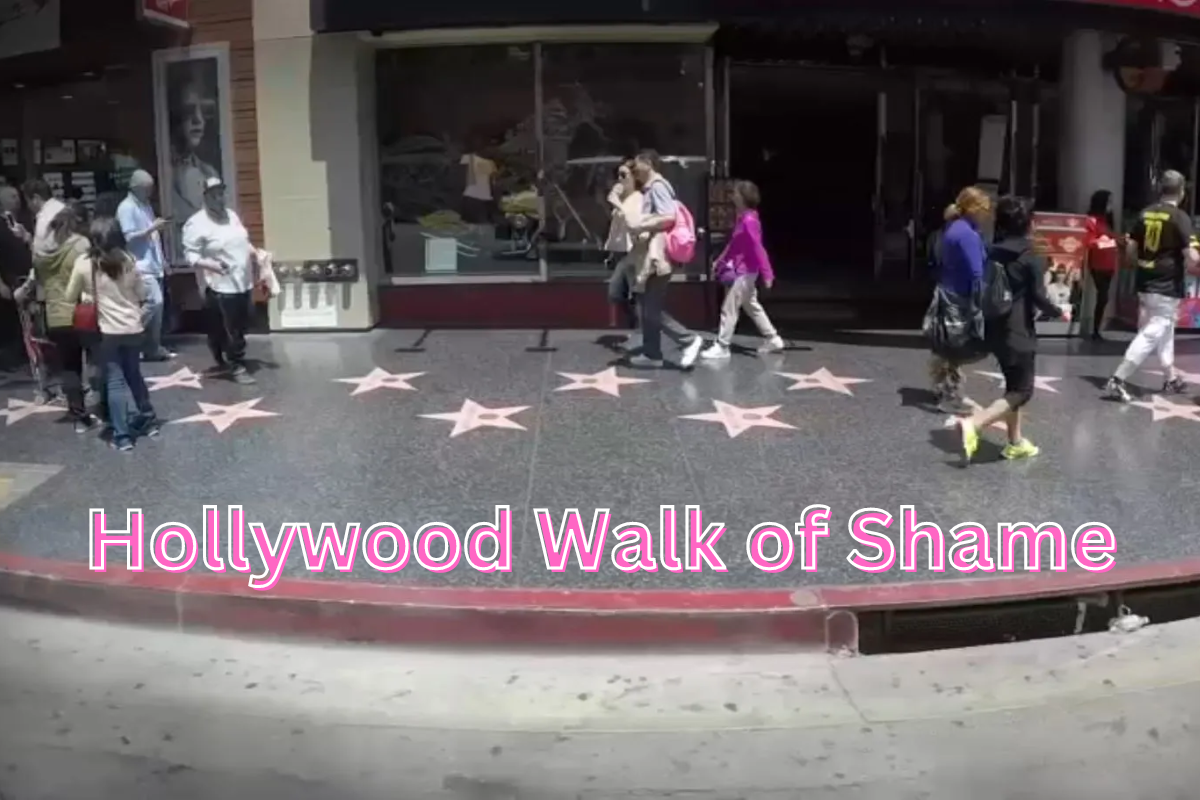Under the combined pressures of financial considerations to export films internationally, domestic fears of communism, and influence from the Catholic Church, portrayals of Jews in mainstream American cinema during the 1930s disappeared.

Joseph Kennedy’s Directive: Shaping Hollywood Narratives in 1939
In a pivotal event on November 13, 1939, former ambassador and lay Catholic Joseph Kennedy delivered a directive to Hollywood executives at Warner Brothers’ studio. Kennedy urged them to cease producing anti-Nazi pictures and to refrain from using the film medium to support the ‘democracies’ against the ‘dictators.’
Citing Hitler’s appreciation for Hollywood movies, Kennedy emphasized the need to eliminate Jewish names from the screen. Producers complied without resistance, leading to a noticeable decline in overt representations of Jews in mainstream American films by the late 1930s.
Also Read: Arthur O’Shaughnessy: The Original Mover and Shaker
Eradicating Jewish Identity
As Steven Carr highlights, Hollywood readily adhered to Kennedy’s directive, resulting in the virtual disappearance of overt representations of Jews in late 1930s American films. This compliance is evident in the records of the Production Code Administration, the motion picture censorship organ. For instance, in the case of the film Scarface, censors instructed producers to downplay the Jewish identity of the character Epstein, emphasizing that he should not be prominently portrayed as Jewish. One example of this trend is in the movie The Life of Emile Zola from 1937. The film portrayed the Dreyfus affair but never mentioned the word ‘Jew.’
In response to Kennedy’s directive, numerous Jewish immigrants who rose to prominence as influential figures in Hollywood underwent literal transformations of their names and personal backgrounds to conform to an outwardly American identity. Notable examples include William Fox, the chief executive of Twentieth Century Fox, formerly known as William Friedman before attaining American citizenship. Renowned actor Paul Muni celebrated for his role in Scarface, changed his name from the distinctly Jewish Friedrich Muni Meyer Wiesenfreund. Screen superstar Edward G. Robinson, born Emmanuel Goldenberg, also embraced this trend. Additionally, movie mogul Louis B. Mayer, hailing from Russian heritage, celebrated the Fourth of July as his official birthday, symbolizing his assimilation into American culture.
Anti-Semitism In 1930s Hollywood: A Complex Undercurrent
The prevailing perception of anti-Semitism in the 1930s tends to be overshadowed by subsequent historical events, often erroneously associating it solely with Nazi ideology. Contrary to this notion, anti-Semitism thrived within Hollywood during the Depression era. One explanation for this phenomenon is its interconnectedness with the anti-communist fervor prevailing in U.S. culture before World War II. Entities such as the House Committee of Un-American Activities and the American Catholic Church were fervently convinced that Hollywood had already fallen victim to communist infiltration, forming a perceived fifth column.
Communist Influence And Social Commentary: A Catalyst for Anti-Semitism
The influx of New York playwrights into Hollywood during this period played a pivotal role. These individuals, carrying the social commentary and authenticity established on the East Coast stage, introduced a Europeanized social vernacular previously isolated from Hollywood. Samuel Ornitz, a writer who arrived in Los Angeles in 1932, epitomized this sentiment when he labeled the city as ‘the first fascist city in America’ in a complaint to Rose Stokes, the leader of the Communist Party of the United States of America (CPUSA).
In January 1939, Martin Quigley, a publisher of motion picture journals and a prominent lay Catholic involved in the Production Code censorship document, expressed apprehension to Joseph Breen, the chairman of the Production Code Administration (PCA). Quigley, well-connected within Catholic circles, hinted at a perceived acceptance of radical propaganda in the industry, particularly among “Semitic brothers.” Although the term communism was not explicitly mentioned, its looming presence and the conflation of Judaism with anti-American sentiments were evident in the discourse.
Communism, Judaism, And Perceived Collaboration
The American Catholic Church maintained the belief that communism and Judaism often collaborated against the interests of the United States. An editorial in the Jesuit newspaper America, dated May 7, 1938, suggested that a more vocal opposition to communism from Jewish spokesmen could enhance public perception of Jews in America.
This stance persisted despite the fact that the majority of Jewish studio executives held conservative political opinions, exemplified by figures like Louis Mayer, who supported Herbert Hoover and actively undermined Upton Sinclair’s gubernatorial campaign.
Inherent Anti-Semitism In The American Catholic Church
Anti-Semitism was deeply embedded in the American Catholic Church’s cultural mindset, stemming from two primary factors. Firstly, rooted in the broader Roman Catholic Church’s belief that Jews were responsible for the death of Christ. Secondly, in contrast to other distrusted groups like blacks, the Irish-influenced Church, having been thoroughly Christianized by the 1930s, viewed Jews differently.
The distinctive faith, separate practices, and different language of Judaism created a sense of otherness. This religious divergence led to conflicts in areas deemed under the jurisdiction of the Catholic Church. Moreover, Jews, unlike blacks, held positions of economic and social significance, particularly within the cinema, contributing to their portrayal as rich, influential, and fundamentally different in the eyes of the American Catholic Church.
Catholic Church’s Anti-Semitic Campaign In Hollywood
In 1933, Bishop John Cantwell of Los Angeles sought ways to eliminate what he perceived as Jewish influence from Hollywood. Corresponding with Archbishop John McNicholas of Cincinnati, Cantwell expressed skepticism about promises made by Jews, anticipating minimal impact. Hiring lawyer Joseph Scott, Cantwell orchestrated a dinner meeting with studio heads where Scott labeled Jewish movie-makers as ‘disloyal Americans.’
In a bold assertion, Cantwell declared that Jewish executives, if genuinely committed, could maintain a non-offensive screen but had opted not to. Joseph Breen, chair of the Production Code Administration, authored Cantwell’s speech, which appeared in the February issue of Ecclesiastical Review. Breen openly accused Jews of debauching the nation, branding them as ‘dirty lice’ and ‘the scum of the earth.’
Glen Jeansonne’s perspective underscores the 1930s as the pinnacle of American anti-Semitism. During this period, the Episcopal Committee, responsible for orchestrating the Catholic Church’s pro-censorship initiatives, issued a statement branding the motion picture industry as a ‘pesthole’ contaminating the entire nation with its indecent films, insisting on its purification.
In light of Joseph Breen’s aforementioned statements, this rhetoric, laden with imagery of pests and infection, unmistakably targeted Hollywood’s Jewish population, employing classical anti-Semitic tropes.
Catholic Dominance And Cultural Warfare: The 1930s Context
In the 1930s, the United States boasted around twenty million Catholics concentrated in economic strongholds like New York, Chicago, and Boston, dwarfing the 1.5 million Jewish population. The American Catholic Church, along with a film censorship body dominated by Catholics, embraced a siege mentality, perceiving itself at war with significant segments of the modern world. The perceived immediate threat lay in communism, seen as an ideology directly challenging the Church’s existence and potentially jeopardizing America.
This threat became entangled with traditional anti-Semitism, seemingly stemming from Central and Eastern Europe, both advocating distinct educational programs and remaining irreconcilable with Church orthodoxy. Fearing repercussions, Jews in Hollywood, contrary to popular perception, assumed a meek and subservient role in the face of more influential political forces.
Consequently, Hollywood witnessed a decade marked by numerous films celebrating the heroism of Irish Catholic priests and depicting Italian fallen Catholic gangsters as villains.
Also Read: It Was a Dark and Stormy Night


